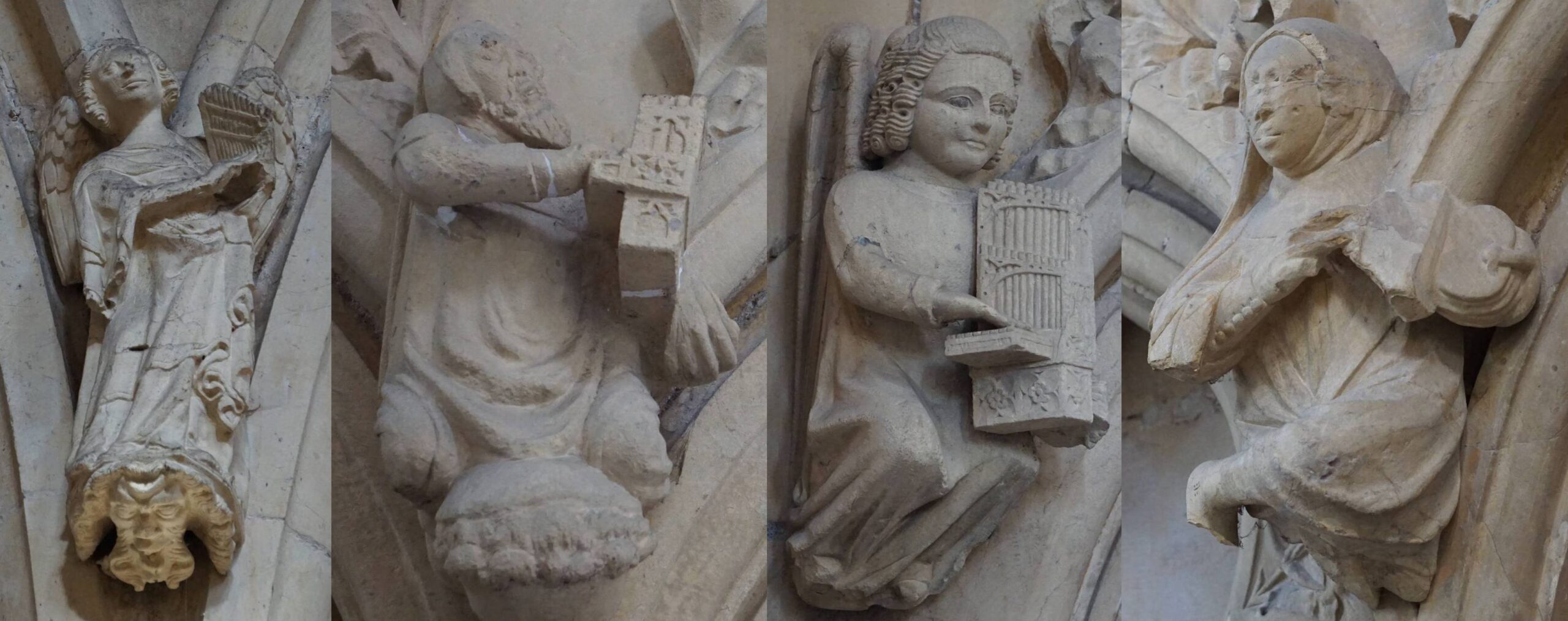To play a musical instrument comfortably, sometimes the player needs a strap to stabilise it. What is the historical evidence for the types of straps used for medieval, renaissance and baroque instruments?
As this article will show, in trying to discover the historical evidence for straps, we immediately encounter the conventions of artistic representation. Medieval artists until the 15th century typically did not show straps, even when an instrument was impossible to play without one; and renaissance and baroque artists showed straps inconsistently and often only partially.
This article takes a roughly chronological look, sifting the artistic conventions from the practical realities to discover if and how straps were used on a range of historical instruments: citole; gittern; harp; psaltery; portative organ; simfony; pipe and tabor; cittern; guitar; nakers; and lutes from the medieval, renaissance and baroque periods.


















